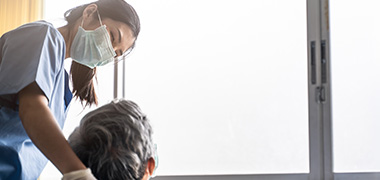
This role has a moderate level of AI exposure. AI can enhance efficiency for some tasks, but this job still relies on human skills and decision-making.
Explore all careersOccupational Health Nurses provide workplace health care and safety management, ensuring worker wellbeing and compliance with safety regulations.
Get qualified to work as an Occupational Health Nurse with a course recognised across Australia. Speak to a training provider to learn more.
Browse occupations related to Occupational Health Nurse
The average salary for registered Occupational Health Nurses in Australia is $1,650 per week ($85,800 per annum). Increase your earning capacity by undertaking supporting qualifications in workplace safety and training.
 Courses.com.au Team
Courses.com.au Team
There are no clear employment figures for Occupational Health Nurses currently working in Australia. They are employed by manufacturing and industrial enterprises, especially on offshore and remote worksites. Some Occupational Health Nurses work for the Australian Defence Forces (ADF).
 Courses.com.au Team
Courses.com.au Team
To become an Occupational Health Nurse you must complete a Bachelor of Nursing and then apply for registration with the Nursing and Midwifery Board of Australia. Once you are a qualified Registered Nurse (RN) you should complete a post-graduate qualification in occupational safety. Good choices include the Graduate Certificate in Occupational Health and Safety, Graduate Diploma of Work Health and Safety, or Master of Health Science (Occupational Health and Safety).
Source: Australian Government Labour Market Insights 2023
 Courses.com.au Team
Courses.com.au Team



Occupational Health Nurses are qualified Registered Nurses (RNs) who provide nursing and safety management services in the workplace. They provide direct nursing support and care to workers, promote occupational safety and wellbeing on the jobsite, and undertake risk management and safety compliance activities.
As an Occupational Health Nurse you could be treating an injured worker at a remote jobsite, administering flu vaccinations, reviewing incident reports, collaborating with the HSE manager to update safety induction training, ordering first aid supplies, inspecting workstations and making recommendations to improve ergonomics, writing up operating procedures for eyewash stations and emergency showers, or attending a conference for work health and safety professionals.